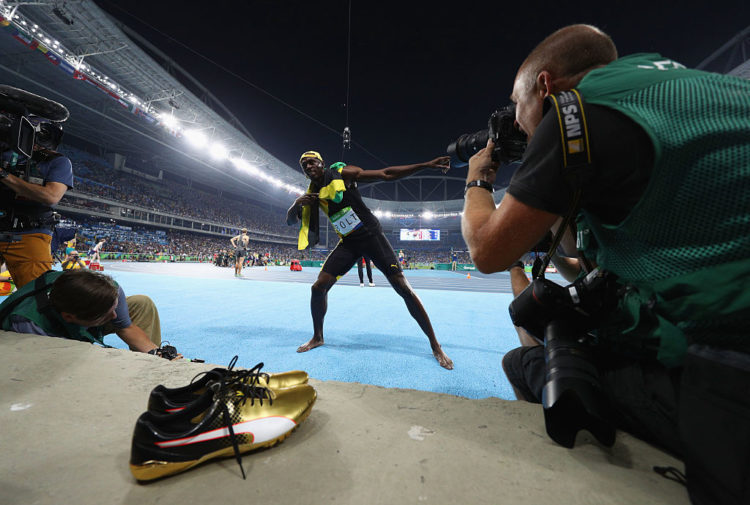The 2016 Forbes rich list of the highest paid athletes in the world shows that being among the highest echelons of sports can be extremely profitable. You can live off brand equity long after you are past your best.
Tiger Woods ranked 12th on the list despite his lack of playing time on the golf course. The American who failed to feature at any of the golf majors of 2016 for the first time in his career earned only US$274,000 from swinging his gold clubs. More significantly however, he walked away with a whopping $45 million from various sports deals and endorsements.
The 2016 list also reveals two things; among the 100 sports stars, only two were women (Serena Williams and Maria Sharapova) and no athletes were from the African continent. So, what should athletes do from these two groups to do to feature more prominently among the super rich?
Cristiano Ronaldo, the Portuguese footballer who plays for Real Madrid of Spain topped the list with earnings of $88 million. A breakdown reveals that 36 per cent of his earnings came from his endorsements. However, this is dwarfed by the 88 per cent recorded by Roger Federer who amassed $60 of his total $67.8 million from endorsements; the highest ratio among the top 10 athletes on the list. Of the top ten athletes, those who are married and in relationships tend to have a higher proportion of the earnings coming from endorsements.
Why have African athletes been slow to engage?
Ronaldo has built up an estimated 215 million followers across Facebook, Twitter and Instagram. This is a brand manager’s delight; as content and branding are increasingly being pushed more to consumers via social media channels. Given this obvious shift in brand-consumer interaction, why have African athletes been slow to engage? Samuel Eto’o, one of Africa’s most decorated football players can only boast of 10 million followers across the different social-media platforms, and does not feature anywhere close to the 100 compiled by Forbes. This, despite being arguably more accomplished on the pitch than Wayne Rooney who ranked 49th on the list.

It is not a case that African athletes are not good enough but these athletes need to realise that they have to create a brand identity to leverage. Usain Bolt, the Jamaican sprinter and only track and field athlete among the 100 is affiliated with the ‘lightning bolt’ and he ensures that he celebrates his every win by recreating this image to the delight and adulation of his fans. Similarly, Cristiano Ronaldo jumps at every opportunity to take his top off and reveal his well-carved torso, an obvious tactic to attract the female fan base, as well as send open invitation to fashion houses that wish to dress him in their latest collection.
African sports stars need to compete and achieve at the highest level.
Mo Farah is another example of an athlete that has recognised the importance of creating a brand identity. The ‘Mobot’, a symbol that the decorated British athlete is now accustomed to displaying on the finish line, coupled with well-timed photos with his family has undoubtedly carved out a brand ambassadorial role for him, which will outlive his performances on the track.
In order to be able to create these identities, African sports stars need to compete and achieve at the highest level because this is where brands tend to spend the majority of their marketing budget. Therefore, for the footballers that chose to chase after the Xi Jinping dollars in China, this might pay in near term, however, it will certainly not help in the creation of an identity that will keep brand managers on speed-dial long after the curtains of their careers have been drawn.
African athletes also need to play to family appeal and ditch the bad-boy and reckless image that is often attributed to the continent’s football players. Roger Federer is always accompanied by his wife during his games and even though all marriages endure rocky patches, the Federers have maintained this clean impenetrable family image that no doubt endears them to the biggest brands.
Brand managers are only after one thing: an increase in brand value. This is what they get paid to do. It is therefore unlikely that they will risk this on athletes that are more likely to destroy brand value than increase it. Therefore, if an athlete is not popular, or has a bad image, it is unlikely that many brand managers will back them. Unless they are Tiger Woods of course.
They need to get creative in their interactions with their social-media followers.
So am I advocating that African sports stars suddenly get married, have a baby, and post this all over social media? Certainly not. However they need to get creative in their interactions with their social-media followers and forge these identities during their competitions. Ronaldo’s matador celebration, Gareth Bale’s love heart, Farah’s Mobot.
When you have millions watching, you definitely have to make them remember you for something. Just ask Eric ‘the eel’ Moussambani.
